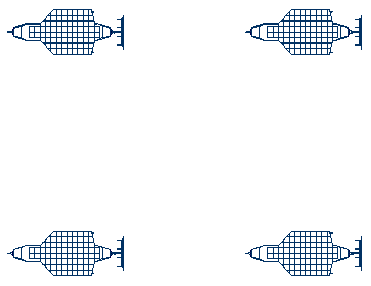|
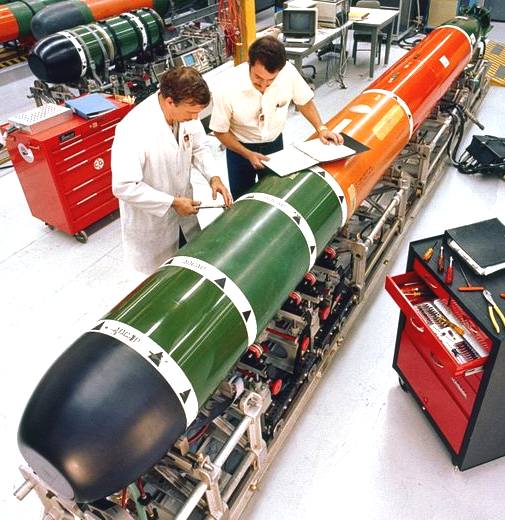
Servicing
a Mark 48 heavyweight torpedo - Gould/Honeywell
MARK 54 - RAYTHEON USA
The Mark 54 Lightweight Hybrid Torpedo (LHT) is a standard 12.75 inch (324 mm) antisubmarine warfare (ASW) torpedo used by the United States Navy.
Development
The Mark 54 was co-developed by Raytheon Integrated Defense Systems and the U.S. Navy under the U.S. Navy's Lightweight Hybrid Torpedo program in response to perceived problems with the extant Mark 50 and Mark 46 torpedoes.
The Mk 50, having been developed to counter very high performance nuclear submarines such as the Soviet Alfa class, was seen as too expensive to use against relatively slow conventional submarines.
The older Mk 46, designed for open-ocean use, performed poorly in the littoral areas, where the Navy envisioned itself likely to operate in the future.
The Mk 54 was created by combining the homing and warhead portions of the Mk 50 and the propulsion unit of the Mk 46, improved for better performance in shallow water, and with the addition of commercial off-the-shelf (COTS) technology to further reduce costs.
Developmental testing began in July, 1999, and a successful critical design review was completed in November, 1999.
In April 2003, Raytheon was awarded a sole source contract for the production of the Mk 54. Full rate production began in October, 2004.
The Mk 54 can be fired from surface ships via the Mark 32 surface vessel torpedo tubes or the vertical launch anti-submarine rocket (ASROC) systems, and also from most ASW aircraft.
Users
The Mark 54 is carried by the U.S. Navy and the Royal Australian Navy. In October 2010, Australia ordered 200 more torpedoes. In June 2011, it was reported that India might buy 32 Mk 54 All-Up-Round Lightweight Torpedoes and associated equipment, parts, training and logistical support for an estimated cost of $86 million through U.S. government's Foreign Military Sales program.
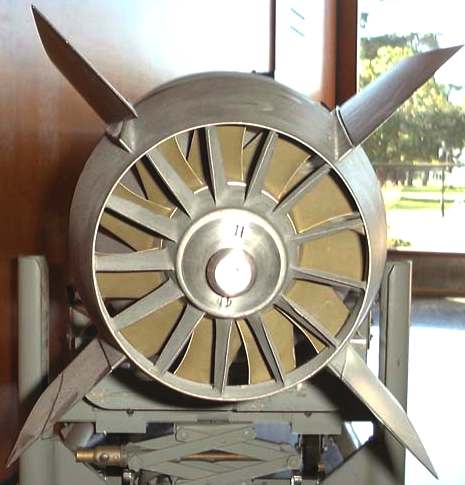
A
Mark 50 torpedo rear showing the fins and water jet drive impellor
MARK 50 - HONEYWELL USA
The Mark 50 torpedo is a U.S. Navy advanced lightweight torpedo for use against fast, deep-diving
submarines. The Mk-50 can be launched from all anti-submarine aircraft and from torpedo tubes aboard surface combatant ships. The Mk-50 was intended to replace the Mk-46 as the fleet's lightweight torpedo. Instead the Mark 46 will be replaced with the Mark 54 LHT.
The torpedo's Stored Chemical Energy Propulsion System uses a small tank of sulfur hexafluoride gas which is sprayed over a block of solid lithium, which generates enormous quantities of heat, in turn used to generate steam. The steam propels the torpedo in a closed Rankine cycle, supplying power to a pump-jet. This propulsion system offers the very important deep water performance advantage in that the combustion products, sulfur and lithium fluoride occupy less volume than the reactants, which means the torpedo does not have to force these out against increasing water pressure as it approaches a deep-diving submarine.
MARK 46 - AEROJET, HONEYWELL, RAYTHEON USA
The Mark 46 torpedo is the backbone of the United States Navy's lightweight anti-submarine warfare torpedo inventory, and is the current NATO standard. These aerial torpedoes are designed to attack high-performance submarines, and current variants, such as the Mark 46 Mod 5, are expected to remain in service until the year 2015. In 1989, a major upgrade program for the Mod 5 began to improve its shallow-water performance, resulting in the Mod 5A and Mod 5A(S).
Mark 46, Mod 5
Primary Function: Air and ship-launched lightweight torpedo
Contractor: Alliant Techsystems
Power Plant: Two-speed, reciprocating external combustion; Mono-propellant (Otto fuel II)
Length: 8 ft 6 in (2.59 m) tube launch configuration (from ship), 14 ft 9 in (4.5 m) with ASROC rocket booster
Weight: 508 lb (231 kg)[3] (warshot configuration)
Diameter: 12.75 in (324 mm)
Range: 12,000 yd (11 km)
Depth: > 1,200 ft (365 m)
Speed: > 40 knots (46 mph, 74 km/h)
Guidance System: Homing mode: Active or passive/active acoustic homing
Launch/search mode: Snake or circle search
Warhead: 96.8 lb (44 kg) of PBXN-103 high explosive (bulk charge)
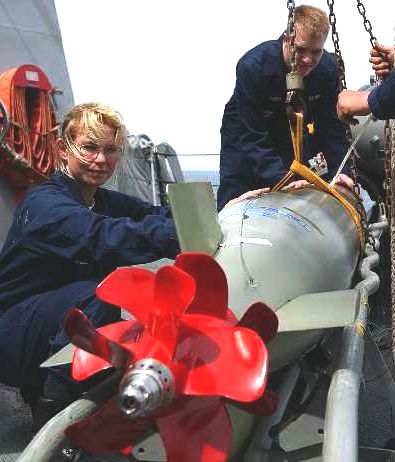
Mark
46 torpedo with contra rotating propellers
MARK 48 - GOULD, HONEYWELL USA
The Mark 48 and its improved Advanced Capability (ADCAP) variant are American heavyweight submarine-launched torpedoes. They were designed to sink deep-diving
nuclear-powered submarines and high-performance surface ships.
The Mk-48 torpedo was designed at the end of the 1960s to keep up with the advances in Soviet submarine technology. Operational since 1972, it replaced the Mk-37 and Mk-14 torpedoes as the principal weapon of U.S. Navy submarines. With the entry into service of the new Soviet Alfa class submarine in 1972, the decision was made to accelerate the ADCAP program, which would bring significant modifications to the torpedo. Tests were run to ensure that the weapon could keep on with the developments and the weapon was modified with improved acoustics and electronics. The new version of the weapon, also known as Mk-48 Mod 4, was extensively tested and production started in 1985, with entry into service in 1988. From then on, various upgrades have been added to the torpedo. As of 2012 Mk-48 Mod 6 was in service; a Mod 7 version was test fired in 2008 in the Rim of Pacific Naval exercises. The inventory of the U.S. Navy is 1,046 Mk-48 torpedoes.
Deployment
The Mk-48 torpedo is designed to be launched from submarine torpedo tubes. The weapon is carried by all U.S. Navy submarines, including Ohio-class ballistic missile submarines, Seawolf-, Los Angeles-, and Virginia-class attack submarines. It is also used on Canadian, Australian, and Dutch submarines. The Royal Navy elected not to buy the Mark 48, preferring to use the Spearfish instead.
Mk-48 and Mk-48 ADCAP torpedoes can be guided from a submarine by wires attached to the torpedo. They can also use their own active or passive sensors to execute programmed target search, acquisition, and attack procedures. The torpedo is designed to detonate under the keel of a surface ship, breaking the ship's back and destroying its structural integrity. In the event of a miss, it can circle back for another attempt.
Propulsion
The swashplate piston engine is fueled by Otto fuel II, a monopropellant that decomposes into hot gas when ignited, which drives the engine. The thrust is generated by a propulsor assembly.
Sensors and improvements
The torpedo's seeker has an active electronically steered "pinger" (2D phased array sonar) that helps avoid having to maneuver as it closes with the target. Unconfirmed reports indicate that the torpedo's sensors can monitor surrounding electrical and magnetic fields. This may refer to the electromagnetic coils on the warhead (at least from 1977 to 1981), used to sense the metallic mass of the ship's hull and detonate at the proper stand-off distance.
The torpedo has been the subject of continued improvement over its service lifetime. In the 1990s, a Mod 6 variant of the ADCAP provided much improved noise isolation from the engine, which makes this torpedo more difficult to be detected by a potential target.
The Mk48 Mod 7 Common Broadband Advanced Sonar System (CBASS) torpedo is optimized for both the deep and littoral waters and has advanced counter-countermeasure capabilities. The MK48 ADCAP Mod 7 (CBASS) torpedo is the result of a Joint Development Program with the Royal Australian Navy and reached Initial Operational Capability in 2006.
On July 25, 2008 a MK 48 Mod 7 CBASS torpedo fired by an Australian Collins-class submarine successfully sank a test target during the Rim of the Pacific 2008 (RIMPAC) exercises.
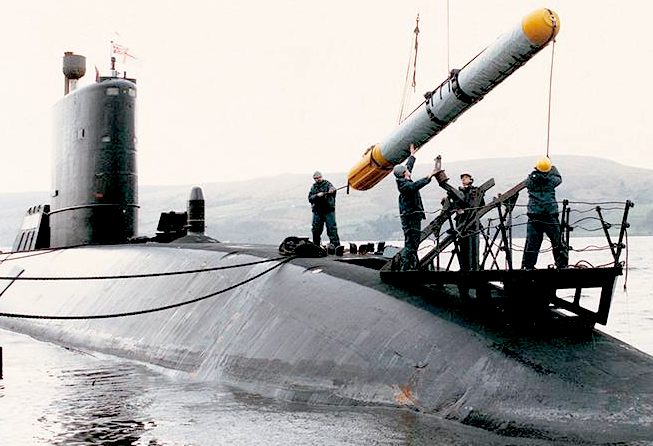
DECEMBER
15 2014 - BAE Systems has been awarded a £270 million contract from the U.K.’s Ministry of Defense (MOD) to upgrade the Spearfish Heavyweight Torpedo for the Royal Navy’s submarines.
Existing torpedoes will be upgraded by BAE Systems at its Broad Oak facility in Portsmouth to the new design with initial deliveries in 2020 continuing until 2024.
The upgrade, known as Spearfish Mod 1 extends the life of the torpedo, improves safety through the introduction of an Insensitive Munitions warhead and by utilizing a single fuel system and provides more capable data links between the weapon system and the launching vessel. This results in capability improvements for the Royal Navy as well as significant reduction in through-life operating costs.
The antisubmarine and antisurface Spearfish torpedoes are currently deployed the BAE Systems designed and built Trafalgar and Vanguard submarines, as well as the Astute Class submarines. Spearfish can be used in defensive and offensive situations and its advanced design delivers maximum warhead effectiveness at high speed with outstanding maneuverability, low radiated noise, advanced homing and sophisticated tactical intelligence.
Defense Secretary, Michael Fallon,
is quoted as saying: “This contract award is good news for the Royal Navy, the U.K. and the city of Portsmouth where around 100 engineering jobs will be created or sustained. He continued “Portsmouth continues to play a significant part in defense as illustrated by this contract award and has a bright future ahead of it thanks to recent investment such as the £600 million contract to run the naval base, sustaining thousands of jobs, and the upcoming £100 million of infrastructure work to prepare the city for the arrival of the Queen Elizabeth Class Carriers.”
Managing Director for BAE Systems’ U.K. Maritime Sector,
John Hudson is quoted as saying: “Upgrading the Spearfish Heavyweight Torpedo will provide sophisticated advances for the Royal Navy with increased operational advantage in the underwater domain.” He continued, “As well as sustaining and creating jobs in the Solent region, the contract allows the opportunity to work on one of the most exciting development programs in the country, underpinning BAE Systems’ position at the forefront of underwater systems development over the last 40 years.”
The Spearfish Upgrade includes a new warhead, a change to the fuel system to improve safety, full digitization of the weapon and a new fiber optic guidance link to improve performance. They are carried by the Royal Navy’s Astute, Vanguard and Trafalgar Class submarines and can target both underwater and surface threats. Once the torpedo has been fired Spearfish homes in on its target using sonar and will be controlled by the submarine after launch via the new fiber optic link.
SPEARFISH - BAE UNDERWATER SYSTEMS UK
The Spearfish torpedo (formally Naval Staff Target 7525) is the heavy torpedo used by the submarines of the Royal Navy. It can be guided by wire or by autonomous active or passive sonar, and provides both anti-submarine warfare (ASW) and anti-surface ship warfare (ASuW) capability.
It replaces the unreliable Tigerfish torpedo, which was withdrawn in 2004; the significantly higher speed of the Spearfish, for which development started in the 1970s, before the breakup of the Soviet Union, was intended to catch high-speed, deep-diving Soviet threats such as the Alfa-class submarine.
Design
The torpedo is driven by a pump-jet coupled to a Hamilton Sundstrand 21TP04 gas turbine engine using Otto fuel II and hydroxyl ammonium perchlorate as oxidiser. The addition of an oxidiser improves the specific energy of the fuel by reducing the fuel-richness of the Otto fuel.
A microprocessor enables the torpedo to make autonomous tactical decisions during the attack. It has a powerful blast warhead, triggered by either contact detonation (against a submarine hull) or an acoustic proximity fuze (for under-keel detonation against ships). A standoff detonation under the keel enhances blast effects against surface ships through the amplification of stress resulting from the interaction of the explosion's products and the flexible structure of the ship. This can be seen in SINKEX video footage.
Production
The production contract for the Spearfish Torpedo was placed with GEC-Marconi Underwater Systems Ltd (now BAE Systems) in 1983, following a development programme lasting for several years.
Deployment
Spearfish entered full production in 1988, with deliveries completed in 2003; the number ordered has not been revealed. Spearfish torpedoes are stored and serviced at Beith Ordnance Storage facility in North Ayrshire.
STINGRAY GEC MARCONI UK
The Sting Ray torpedo is a current British acoustic homing light-weight torpedo (LWT) manufactured by GEC-Marconi, who were later bought out by BAE Systems. It entered service in 1983.
A desire to not be dependent on US torpedo purchases led to a research programme starting in 1964 to develop a British torpedo. Initially designated Naval and Air Staff Requirement (NASR) 7511, it was (much later in the late 1970s) designated the Sting Ray torpedo.
Design studies in the mid-1960s proposed that a tank of polyethylene oxide be carried behind the warhead. This polymer would be exuded at the nose to reduce the drag coefficient. Experiments using buoyancy-propelled torpedoes in 1969 had shown reductions in the drag coefficient up to 25%. However, by 1969 this scheme had been rejected in favour of carrying a larger battery.
The homing system developed in the mid-1960s incorporated a spinning magnetic disc onto which the acoustic correlation algorithms were etched but this was replaced by integrated circuit technology when the disc sometimes failed to survive the impact of the weapon with the sea from high altitude launches.
The original warhead concept was for a simple omnidirectional blast charge. However, studies in the 1970s showed that this would be inadequate against the large double-hulled submarines then entering service. A directed energy (shaped charge) warhead was used in the production weapon.
In 1976 the designs had to be completely revised. Swapping the project for buying a ready-made US torpedo was not considered because the torpedo was expected to be better, and was all-British. The project manager was Eric Risness CBE.
Manufacture
The torpedo was built at the MSDS plants at Neston (in Cheshire) and MUSL in Farlington Portsmouth. Guidance systems were made by Sperry Gyroscope Company.
Deployment
The original in-service version (Sting Ray Mod 0) entered service in 1983. It is propelled by a pump jet driven by an electric motor. Power is supplied by a magnesium/silver-chloride sea water battery. The propulsion method combines high speed, deep diving, agility and low noise levels. The weapon is provided with target and environmental information by the launching platform. Once launched it operates autonomously, with tactical software searching for the target using active sonar and then homing in without any further assistance. The software is designed to deal with the employment of countermeasures by the target. The weapon is designed to be launched from fixed wing or rotary winged aircraft and surface ships against submarine targets.
The development of the torpedo cost £920 million. The Mark 24 Tigerfish submarine-launched torpedo had also overshot its initial budget.
Dimensions
Sting Ray has a diameter of 324 mm (12¾ inches) and a length of around 2.6 metres (8.5 feet). It has a launch weight of 267 kg (589 lb), and carries a 45 kg (99 lb) Torpex warhead. It has a speed of 83 km/h (45 knots) over a range of 8,000 metres (4.3 nautical miles).
Sting Ray Mod 1 is intended to used against the same targets as Sting Ray Mod 0 but with an enhanced capability against small clad conventional submarines via a shaped-charge warhead, and an improved shallow-water performance. It shares many hull components with the original weapon.
Specifications
Length : 2.6 m
Diameter : 324 mm
Weight : 267 kg
Warhead : 45 kg of HE in a shaped charge
Speed : 45 knots
Range : 8–11 km
Depth : 800 m
Propulsion : Magnesium/silver chloride seawater battery (Pump-jet)
Guidance : Active/Passive sonar
DM2A4 - GERMANY
DM2A4 Seehecht (export designation "SeaHake mod 4") is the latest heavyweight torpedo developed by Atlas Elektronik for the German Navy, as a further update of DM2 (Deutsches Modell 2) torpedo which was released in 1976. Being the successor of the DM2A3, it features an advanced electrical propulsion system and a fiber optic cable for torpedo guidance and communication, which, in conjunction with advanced signals processing and mission logic, makes the torpedo largely countermeasure resistant.
The DM2A4/SeaHake mod 4 is the first torpedo ever to be guided by a fiber optic wire. With a fully digital system architecture, enhanced range and speed and its new conformal array sonar with a very wide panoramic sensor angle as well as the additional wake-homing sensor, the DM2A4/SeaHake mod 4 provides greatly advanced performance over its predecessor. The homing head shell is a hydrodynamic optimised parabolic shape which aims to reduce torpedo self-noise and cavitation to an absolute minimum. The homing head's conformal transducer array permits detection angles of +/-100° in the horizontal and +/-24° in the vertical, therefore supporting larger acquisition angles in comparison to traditional flat arrays. The wide angle array is designed to reduce maneuvering when in search and reconnaissance stages, therefore also reducing self-noise and preserving battery power.
The weapon has a modular design that includes up to four silver zinc battery modules and is able to achieve a range of more than 50 km (27 nm) and a speed exceeding 92.6 km/h (50 kt) powered by a high frequency permanent magnet motor, with a closed-loop cooling system independent from the environment. Exact performance data is classified. The torpedo design template may also be used as the basis for ROV. The weapon is armed with a 260 kg PBX, (hexogen–aluminium) warhead (equivalent to 460 kg of TNT) with magnetic influence and contact fuzes. The charge and fuse are insensitive and EMP safe.
The torpedo is in service with the German Navy Type 212 submarines, has been delivered to the Pakistan Navy for service in the Agosta 90B submarines and has been selected by the Spanish Navy for its new S80A submarines.
The weapon has a length of 6.6 m when configured with 4 battery modules, and is respectively shorter when configured with either 3 or 2 battery modules depending upon the requirement of the operating unit. Diameter of the unit is 533 mm.

MY90 IMPACT GEIE EUROTORP
The MU90/IMPACT is an advanced lightweight anti-submarine torpedo used by navies of Germany, France, Italy, Denmark, Australia and Poland. It is designed to compete with and outperform the US-built Mark 46 in the anti-submarine role, and is also available in a special MU90 Hard Kill version for anti-torpedo defence. The MU90 is built by a wide consortium of European companies organised as EuroTorp.
The MU90 was the result of separate projects in France and Italy from the 1980s. In France, a project under the direction of Thomson Sintra created the "Murène" in 1989, while in Italy Whitehead started work on an A244 replacement known as the A290. In 1990 the first attempts to merge the two efforts started, a process that was completed in 1993 with the formation of EuroTorp.
Among its many features, the MU90 is capable against any current or perceived threat, including a bottomed stationary mini-submarine, known versions of anechoic coatings, and various decoys. It is also capable of launch speeds up to 400 knots, allowing it to be dropped from maritime patrol aircraft flying at high speeds, or rocket-assist launchers. Powered by an electric pump-jet, it can be run at "silent" speeds to avoid giving its location away to the submarine, or "dash" at speeds over 50
km/h. It uses a shaped charge warhead that can penetrate any known submarine hull, especially Soviet double hull designs, while remaining just as deadly in shallow waters where conventional warheads are less effective.
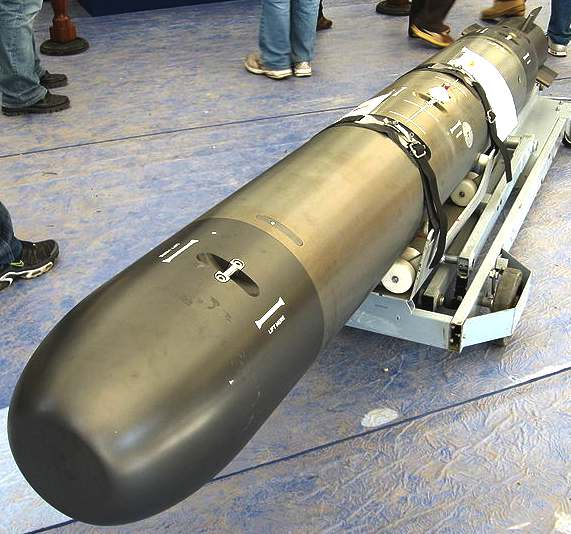
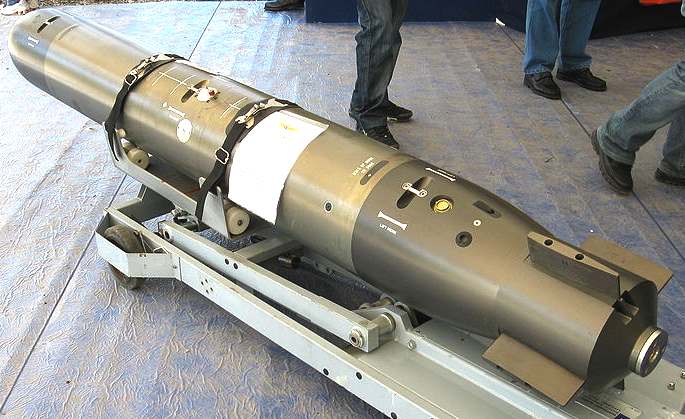
The
MY90 Eurotorp PBX shaped charge warhead and high speed impellor water jet drive
YU-8 CHINA
Yu-8 (鱼-8) torpedo was developed as the electrically-powered counterpart of the Otto-fuel-II-powered Yu-6, with which it shares many components and technologies, with the exception of the propulsion system.
Domestic Chinese sources have said that the Yu-8 torpedo had become the test vehicle and subsequently the first torpedo to be armed with a new warhead developed by the Chinese naval research institute. The new warhead utilizes sodium hydride compounds / chemical reaction; on detonation a large amount of sodium powder is released, which reacts with seawater to produce large amounts of very-high-temperature hydrogen within a very short period of time, so that the temperature instantly increases to over 2,000 °C within a radius of a few dozen metres as the hydrogen reacts with oxygen, destroying the target even if not hit. During the test in East China Sea, a retired 12,000-ton ship was struck by two Yu-8 torpedoes, which completely melted the side of the ship within fifteen minutes
YU-6 CHINA
Yu-6 (鱼-6) torpedo is the Chinese counterpart of the US Mark 48 torpedo. Guidance can be by wire, active and passive homing, or wake homing. Domestic Chinese sources have claimed that the Yu-6 torpedo is in the same class as the Mk 48 Mod. 4 torpedo. Official information on the Yu-6 torpedo is limited.
One characteristic of the Yu-6 torpedo is its high-performance processor, where most western torpedoes are thought to use old (reliable) processors. The microprocessor used for the Yu-6 is of approximately Intel 80486 class. Some Chinese sources have claimed that Loongson-1 is used for Yu-6 torpedo.
The transducer array of the torpedo's acoustic seeker is believed to have about the same number of transducers as the Mark 48 torpedo. The Yu-6 torpedo uses modular design and open architecture software programming, so that when new technologies and programs become available they can be readily incorporated.
The first generation Chinese-made wire-guided torpedo Yu-5 torpedo, used acoustic guidance only in the final stage of an attack or if the wire was severed; in the new torpedo guidance can be switched between wire and acoustic at any time. If the wire is severed, the targeting information stored in the memory enables the computer onboard to calculate the approximate new location of the target, augmenting the acoustic homing to achieve a higher kill probability.
Specifications
Diameter: 533 mm
Guidance: passive / active acoustic homing + wake homing + wire guidance
Propulsion: Otto fuel II
Speed: maximum > 65 kt (for attack)
Range: maximum 45 km+ (at the cruise speed)
TYPE 53 - RUSSIA
Type 53 is the common name for a family of 53 cm torpedoes manufactured in Russia, starting with the 53-27 torpedo and continuing to the modern UGST.
With the exception of the UGST which uses Mark 48 style monopropellants, Soviet 53 cm torpedoes generally use electric power, or kerosene mixed with various oxidizers for propulsion. Russian torpedoes are often named descriptively for their characteristics - examples include "acoustic homing" or "electric torpedo", all in Russian acronyms.
The first Soviet torpedo with homing capability was the SAET-50. The 53-61 was the first Soviet homing torpedo to exceed 40 knots.
The 53-65 torpedo family are Russian made, wake-homing torpedoes designed to destroy surface ships. The 53-65 became operational in 1965, while the 53-65K and 53-65M both became operational in 1969. The 53-65KE is an exported version. China received an unknown number of 53-65KE torpedoes from Russia after purchasing 4 Kilo class submarines in the 1990s.
The Type 53 torpedo is carried by almost all Russian submarines, including the Kilo class and the Akula class.
53-65
Specifications
Primary function: ASUW & ASW torpedo
Power plant:
53-65 and 53-65M: Kerosene-hydrogen peroxide turbine
53-65K: Kerosene-oxygen turbine
Length: 23.6 ft (7.2 m)
Weight: 4,563 lb–4,630 lb (2,070 kg–2,300 kg)
Diameter: 21 in (533 mm)
Range:
53-65: 18,000 metres (20,000 yd)
53-65K: 19,000 metres (21,000 yd)
53-65M: 22,000 metres (24,000 yd)
Speed:
53-65 and 53-65K: 45 kt (52 mi/h, 83 km/h)
53-65M: 44 kt (51 mi/h, 81 km/h)
Guidance system: ACTIVE/PASSIVE homing and WAKE homing
Warhead: 307.6 kilograms (678 lb) high explosive
Operational since:
53-65: 1965
53-65K and 53-65M: 1969
APR-3E - JSC SOVIET UNION
The APR-3E airborne light ASW acoustic homing torpedo is designed by Russian Tactical Missiles Corporation JSC to engage current and future submarines in at depth from the surface down to 800 metres at speed of up to 43+ kts, and it is a replacement for earlier APR-2 light antisubmarine acoustic homing torpedo.
APR-3E airborne light antisubmarine acoustic homing torpedo is designed to be carried by a various fixed wing and rotary wing platform including Tu-142, Il-38, Ka-28 and other aircraft. The torpedo requires at least 100 metres depth of water for the initial air-drop and can be deployed in conditions up to sea state 6.
Once entering water, the control surfaces of the torpedo enable the torpedo to travel in a spiral path with the help of gravity without starting the engine. During this stage, the acoustic seeker of the torpedo searches for targets. Once the target is identified, the engine starts and solid propellant rocket engine ensures the targets has virtually very little or no time to react, thus increasing the kill probability.
Specifications
Designation: APR-3E light ASW torpedo (Manufacturer calls the weapon as a missile instead)
Manufacturer: Region Scientific and Production Enterprise JSC division of the Tactical Missiles Corporation Joint Stock Co.
Speed: > 56 kt
Range: > 3 km
Diameter: 350 mm
Length: 3.685 metre
Weight: 525 kg (another 25 kg for accessory for aircraft deployment)
Propulsion: solid-propellant rocket-powered turbo-waterjet
Fuze: impact and proximity
Warhead: 74 kg
Seeker: acoustic
Seeker range: 1.5 km – 2 km
Maximum target speed: > 43 kt
Users: Russia purchased a small number of APR-3E for its navy, while China was reported to be the first export customer when APR-3E was as part of the Chinese Be-200 ASW aircraft purchase package.
VA-111 SHKVAL - SOVIET UNION
The VA-111 Shkval (from Russian: шквал — squall) torpedo and its descendants are supercavitating torpedoes developed by the Soviet Union. They are capable of speeds in excess of 200 knots (370 km/h).
Design and capabilities
Design began in the 1960s when the NII-24 research institute was ordered to produce a new weapon system capable of combating nuclear submarines. In 1969, the GSKB-47 merged with NII-24 to create the Research Institute of Applied Hydromechanics in Kiev, Ukraine (constructor Merkulov); the Shkval being a product of this merger.
Announced as being deployed in the early 1990s, although previously operational as early as 1977, the Shkval is designed as a countermeasure against torpedoes launched by undetected enemy submarines. It may also be used as a counter to incoming torpedoes whereby it is launched at the enemy submarine, forcing it to evade, and hopefully cutting the guidance wire to the enemy torpedo in the process.
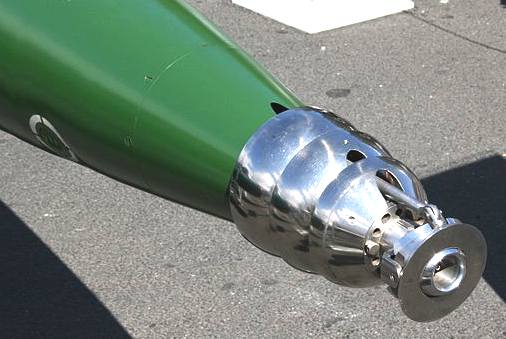
Shkval
steer-able gas envelope nose cone
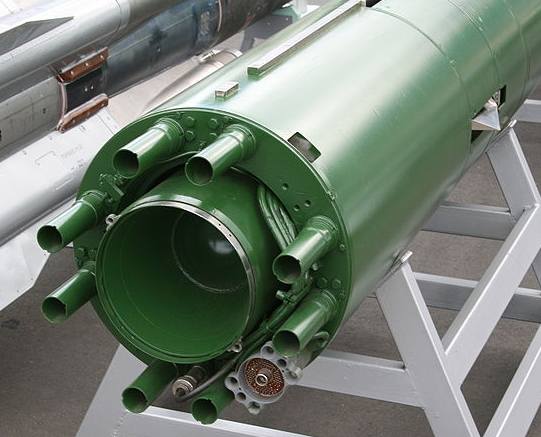
Shkval rear, showing the guidance fins and the electronics connector
The speed of the VA-111 far exceeds that of any standard torpedo currently fielded by NATO. This speed is a result of supercavitation: the torpedo is, in effect, flying in a gas bubble created by outward deflection of water by its specially shaped nose cone and the expansion of gases from its engine. By keeping water from coming into contact with the surface of the body of the torpedo, drag is significantly reduced, allowing extremely high speeds.
Launched from 533 mm torpedo tubes, the VA-111 exits the tube at 50 knots (93 km/h). Shortly afterwards, its liquid-fuel rocket ignites and propels it to speeds of up to 200 knots (370 km/h). Some reports indicate that speeds of 250+ knots may be achieved, and that work on a 300-knot (560 km/h) version was underway. The rocket engine uses a combination of high test peroxide and kerosene; the propellant tanks contain about 1500 kg of hydrogen peroxide and 500 kg of kerosene.
Early designs may have relied solely on an inertial guidance system. The initial design was intended for nuclear warhead delivery. Later designs reportedly include terminal guidance and conventional warheads of 210 kg (460 lb).
The missile controls its direction using four fins that skim the inner surface of the supercavitation envelope. To change direction, the fin or fins on the inside of the desired turn are extended, and the opposing fins are retracted. To make faster turns, the push plate on the nose can be used to control the shape of the bubble the missile is traveling in.
Manufacture
The torpedo is manufactured in Kyrgyzstan by a state-owned factory. In 2012 the Russian government purchased a 75% ownership of the factory in exchange for writing off massive Kyrgyz debt to Russia.
Specifications
There are at least three variants:
VA-111 Shkval - Original variant; GOLIS autonomous inertial guidance.
"Shkval 2" - Current variant; believed to have additional guidance systems, possibly via the use of vectored thrust, and with much longer range.
A less capable version currently being exported to various third world navies. The export version is sometimes referred to as
"Shkval-E" by Western analysts.
Iran claimed it has created a version named Hoot.
All current versions are believed to be fitted only with conventional explosive warheads, although the original design used a nuclear warhead.
Length: 8.2 m (26 ft 11 in)
Diameter: 533 mm (21 in)
Weight: 2,700 kg (6,000 lb)
Warhead weight: 700 kg (1,500 lb)
Launch speed: 50 knots (93 km/h; 58 mph)
Maximum speed: 200 knots (370 km/h; 230 mph) or greater
Range: Around 11–15 km (6.8–9.3 mi) (new version). Older versions only 7 km (4.3 mi)
BLUEFISH
DEVELOPMENT PROJECT INDEX A-Z
21st
CENTURY SUBMARINE HUNTING - WOLF PACK ZCC DESTROYERS
The
map below shows a very basic sample scenario for the deployment of a ZCC network of
vessels with equipment to locate, track and destroy enemy submarines. The
modern Wolf-pack is surface operated and in this scenario is armed with
underwater torpedoes such as Spearfish, Type 48 Type 50 torpedoes, that are
launched from an adapted ZCC platform (codenamed Wolverine). Predator hunter-killer
minisubs do not have to use explosives to sink submarines - thereby reducing potential
contamination, but expediency may dictate the use of conventional torpedoes and
acceptance of the ocean pollution that follows. By using conventional torpedoes
the development time is just that for the ZCC mothership.
INNOVATION
- Nuclear submarines are considered by many superpowers to be a covert
delivery system and thus immune to detection. Hence, an insurance policy
against first strike. That was so until the concept of the Seawolf
autonomous delivery system for the Predator hunter-killers (or similar
weapon). Predator
mini-subs are capable of taking out any submarine covertly. A pack (grid)
could neutralize a fleet of submarines simultaneously. Once the
wolf-pack acquires a target, it passes that information between a network
of autonomous ships, each one having the capacity to launch a Predator (or
similar weapon), to
sink any nuclear submarine while submerged. Once a target is acquired, it
is passed between the network and continuously tracked until countermeasures, or
first strike is/are
deemed necessary. The hunter becomes the hunted. A study of a global deployment
strategy that will work is long overdue.
SUBMARINE
WARFARE
Naval warfare is divided into three operational areas:
a)
surface warfare,
b)
air warfare and
c)
underwater warfare (anti-submarine, mine or countermeasures)
Modern submarine warfare consists primarily of diesel and nuclear submarines using weapons (like torpedoes, missiles or nuclear weapons), as well as advanced sensing equipment, to attack other submarines, ships, or land targets.
DEPLOYMENT
ARENA
The four main deployment arenas are:
1.
The Atlantic and
2.
The Pacific.
3.
Indian Ocean
4.
Mediterranean Ocean
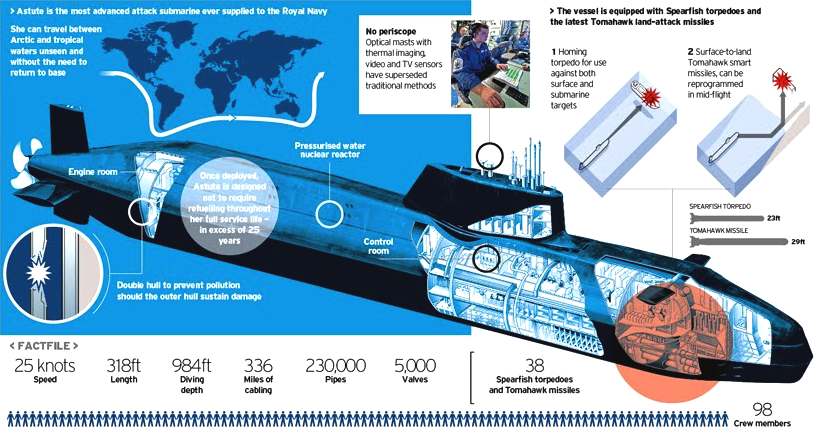
Launching
a nuclear submarine, is like flushing 90+ lives and $billions of tax dollars down
the drain. It does though make great headlines for politicians who want the
public to think they are safe.
SUBMARINE MISSIONS (CONVENTIONAL) PRIOR TO ZCCs
Modern submarines are a multi-role platform for overt and covert operations. In peacetime
a submarine can act as a visible deterrent or carry out surveillance operations,
but at significant
cost.
In wartime a submarine is mainly used for:
* Protection of task forces and merchant shipping
* Denial of sea areas to an enemy
The United States Navy is quoted as saying: "Submarines require no vulnerable underway logistics chain nor depend on mutual defense from other platforms for survivability."
That is correct save for consumables supplies for a crew and remaining
undetected.
BATTLESHIPS
Anyone
who has ever played 'Battleships' will know how difficult it is to hide their
fleet. It is the same in real life. In times of war submarines cannot go
skulking about hiding from the enemy, they must protect shipping and attack
enemy shipping. In modern peace times submarines will skulk around trying to
hide themselves, for once acquired they are toast. A submarine that does
otherwise is really only there for show.
Subs
with nuclear missiles must be able to launch their missiles at land based
targets. Once detected, that tactical reserve is lost - they are toast. Modern
naval warfare is therefore persistent monitoring of the enemy: Intelligence.
LINKS
& REFERENCE
FBO
DARPA opportunity
Submarine
Warfare
List
of sunken nuclear submarines
Battle
Pirates
Marine
Technology News systems-upgrade-torpedoes
http://www.marinetechnologynews.com/news/systems-upgrade-torpedoes-505409
http://www.military-today.com/navy/seawolf_class.htm
http://battlepirates.wikia.com/wiki/Hulls
SUBMARINE
INDEX
Alvin
DSV - Woods Hole Oceanographic Institution
HMS
Astute 1st of Class
BAE Systems
HMS
Vanguard- Trident
INS
Sindhurakshak - explosion
& sinking
Lusitania
- Torpedo
attack
Nuclear
submarines lost
at sea
Predator
- Covert submarine hunter/killer
Seawolf
- Autonomous wolf pack deployment of Predator mini-subs
Torpedoes
- UUV anti submarine weapons
U20
- Kapitan Leutnant Walther Schwieger
USS
Bluefish WWI submarine
USS
Bluefish - Nuclear submarine
USS
Flying Fish
USS
Jimmy Carter - Seawolf class fast attack nuclear submarine
USS
Nautilus - 1st nuclear submarine & subsea north pole passage
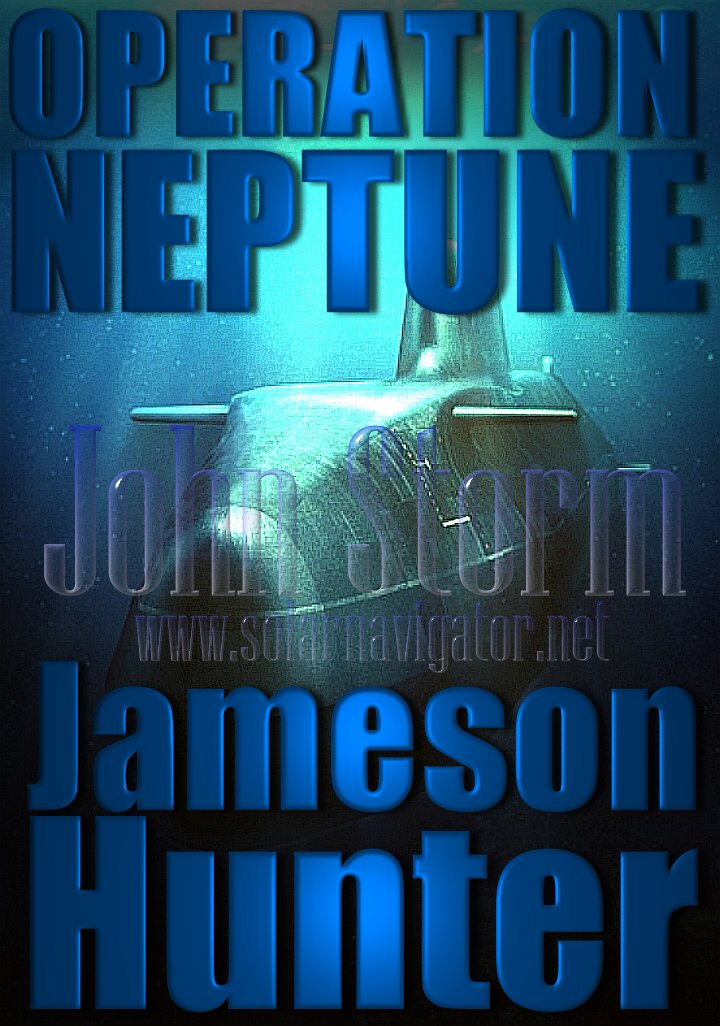
FICTION
Operation
Neptune - An
advanced nuclear submarine is hijacked by environmental extremists intent on
stopping pollution from the burning of fossil fuels. The extremists torpedo a
number of oil wells as part of a campaign to cause energy chaos, with bigger
plans to come. If you enjoyed Under Siege or The Hunt for Red
October, this is a
must for you.
|








